There’s something irresistibly refreshing about the tangy zest of fresh limes. Whether you’re garnishing a cocktail, flavoring dishes, or simply enjoying their vibrant fragrance, having your own lime tree within arm’s reach is a small luxury anyone can enjoy. And the best part? You don’t need a sprawling garden to do it!
Growing limes in pots is surprisingly simple, and with the right care, you can harvest juicy, sun-ripened fruit even from a small balcony, patio, or sunny kitchen corner. In this comprehensive guide, we’ll cover everything you need to know to successfully grow limes in containers — from choosing the best varieties to mastering care tips and troubleshooting common issues.
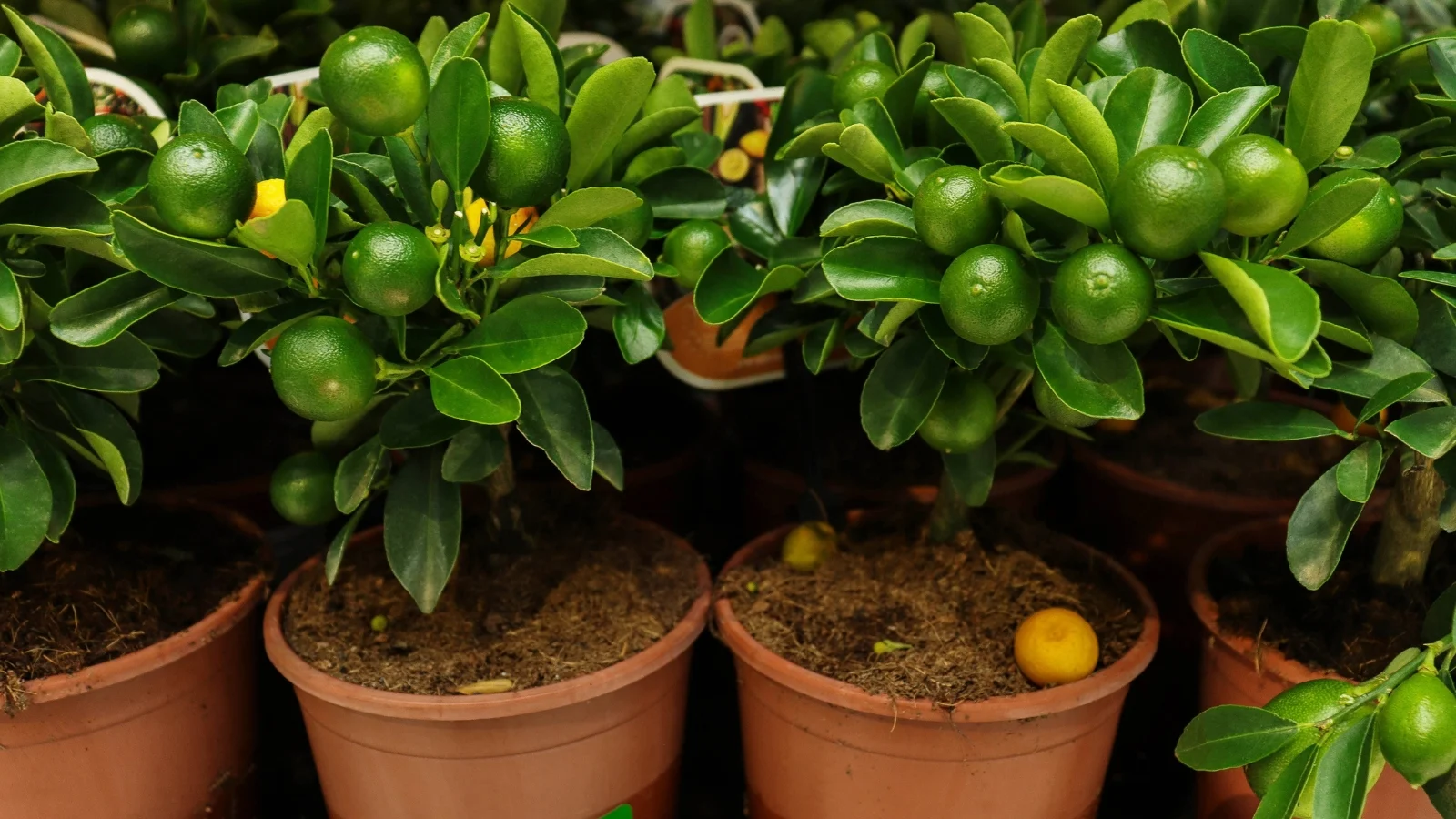
Why Grow Limes in Pots?
Container gardening offers flexibility and convenience, especially for those with limited space or colder climates. Here’s why limes thrive in pots:
- Space-Saving: Perfect for patios, balconies, terraces, or indoor sunrooms.
- Easy Mobility: Move your tree for optimal sunlight or shelter it indoors during winter.
- Pest & Disease Management: Easier to monitor and control problems in a container.
- Charming Aesthetic: Glossy green leaves, fragrant white flowers, and bright green fruits add beauty year-round.
If you love the idea of harvesting fresh citrus right outside your door, growing limes in pots is a rewarding project for beginners and seasoned gardeners alike.
Best Lime Varieties for Containers
Not all lime trees are suited for pot life, so selecting the right variety is key. Look for dwarf or compact types that flourish in containers. Here are top choices:
- Key Lime (Mexican Lime): Popular for its tart, aromatic fruit, perfect for drinks and desserts.
- Bearss Lime (Persian Lime): A seedless, slightly larger lime with mild flavor — cold-hardy and container-friendly.
- Kaffir Lime: Known for its unique double-lobed leaves used in Asian cuisine, plus small bumpy-skinned fruits.
- Australian Finger Lime: An exotic variety producing caviar-like pulp — striking and ideal for patio containers.
Pro Tip: Choose a grafted dwarf variety for quicker fruiting and manageable size.
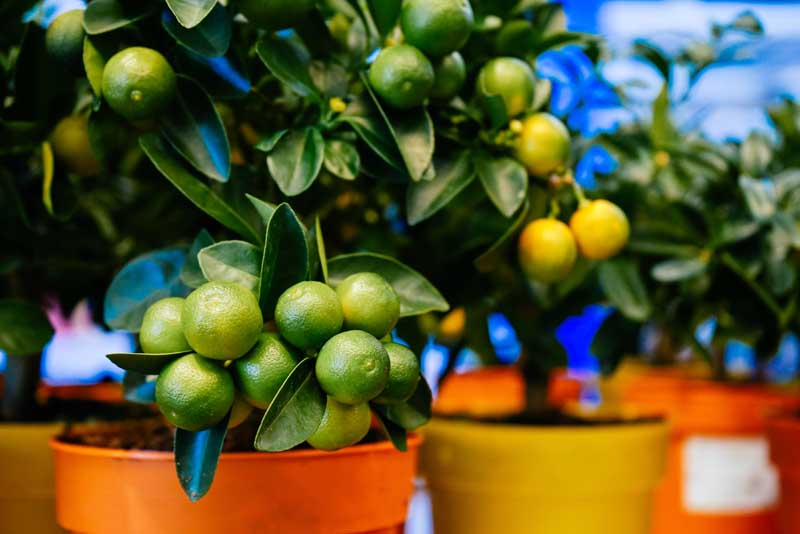
Choosing the Perfect Pot
Your lime tree’s home matters more than you might think. A good container ensures healthy root growth and proper drainage, which are essential for citrus trees.
- Size: Start with a container at least 18–24 inches in diameter and depth for young trees. Size up as it grows.
- Material: Terracotta, ceramic, or thick plastic pots work well. Terracotta is breathable and helps prevent waterlogging.
- Drainage: Must-have. Ensure several drainage holes at the base to avoid soggy roots.
Extra Tip: Use a plant caddy or wheels for easy relocation as seasons change.
The Ideal Soil Mix for Potted Limes
Limes crave well-draining, slightly acidic soil. Dense, compacted soil will lead to root problems, so opt for:
- Citrus-specific potting mix (available at garden centers)
- Or make your own:
- 2 parts peat moss or coco coir
- 1 part perlite or coarse sand
- 1 part compost or well-rotted manure
Aim for a soil pH between 5.5 and 6.5. You can test it using an inexpensive pH meter or soil kit.
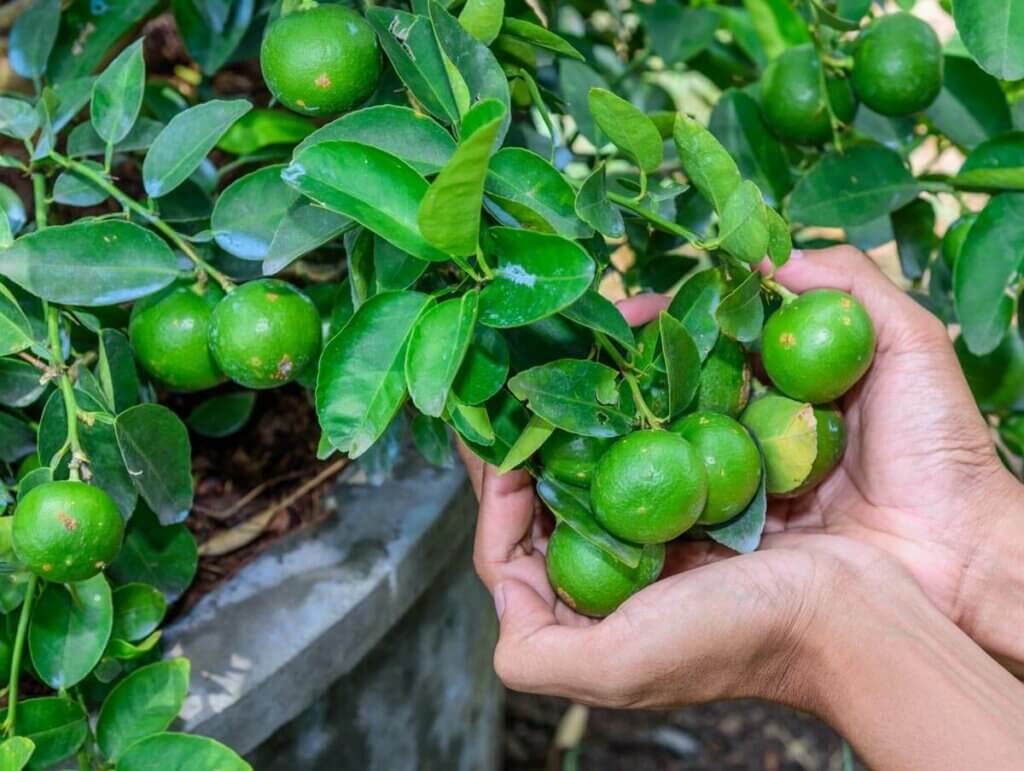
Light and Temperature Requirements
Lime trees are sun-loving plants that thrive with generous amounts of light.
- Sunlight: Minimum 6–8 hours of direct sunlight daily. Position your pot in the sunniest spot available.
- Temperature:
- Ideal: 60°F–85°F (16°C–29°C)
- Bring indoors when temperatures drop below 50°F (10°C)
- Avoid cold drafts if placed indoors.
If growing inside, supplement with grow lights to maintain healthy, steady growth.
Watering and Fertilizing Lime Trees in Pots
Watering:
- Keep the soil evenly moist but not soggy.
- Water deeply when the top 1–2 inches of soil feels dry.
- Reduce watering frequency in winter when growth slows.
- Avoid letting the pot sit in standing water — always empty saucers.
Fertilizing:
Lime trees are heavy feeders, especially in containers.
- Use a balanced citrus fertilizer high in nitrogen and containing micronutrients like magnesium, zinc, and iron.
- Feed every 4–6 weeks during active growing months (spring to early fall).
- Fertilize less often in winter — about every 8 weeks or as needed.
Pro Tip: Flush the soil occasionally with plain water to prevent salt buildup from fertilizers.
Pruning and Maintaining Shape
Pruning isn’t just about keeping your lime tree pretty — it also encourages fruit production and airflow.
- Remove dead, damaged, or overcrowded branches year-round.
- Prune in late winter or early spring before new growth starts.
- Cut back leggy branches to promote bushier, more compact growth.
- Remove any suckers (shoots from the rootstock) promptly.
Tip: Regularly pinch off tiny growing tips to maintain shape and size.
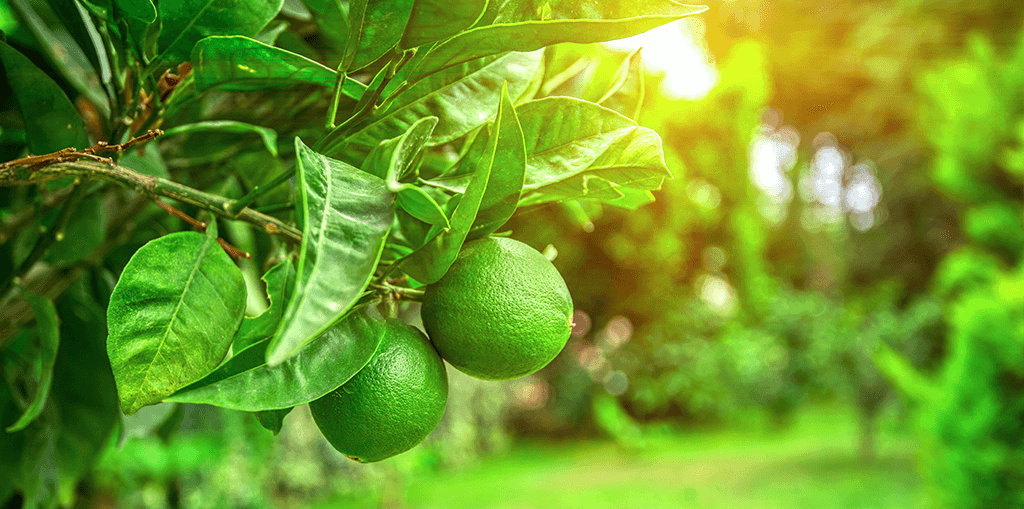
Flowering, Pollination, and Fruit Production
Most lime trees are self-pollinating, but outdoor trees benefit from bee visits and other pollinators. For indoor or patio plants:
- Hand-pollinate by gently brushing the inside of flowers with a soft paintbrush or cotton swab to transfer pollen.
- Alternatively, gently shake branches to release pollen between flowers.
Bloom to harvest: It usually takes 6–9 months from flowering to mature limes.
Common Pests and Problems (and How to Fix Them)
Like all citrus, potted limes can occasionally face pests or minor health issues:
- Aphids: Remove with insecticidal soap or a firm spray of water.
- Scale Insects: Scrape gently or treat with neem oil.
- Spider Mites: Increase humidity and wipe leaves with a damp cloth.
- Leaf Yellowing: Usually from overwatering, nutrient deficiency, or cold exposure.
Pro Tip: Inspect leaves regularly (especially undersides) for early signs of trouble.
Harvesting Your Limes
Fresh limes don’t ripen much after picking, so timing matters.
How to know when they’re ready:
- Slightly soft to the touch.
- Glossy skin with a uniform green (or yellowish-green for Key limes).
- Strong lime scent.
- Taste test one to confirm flavor and juiciness.
Use sharp scissors or pruning shears to avoid damaging the tree when harvesting.
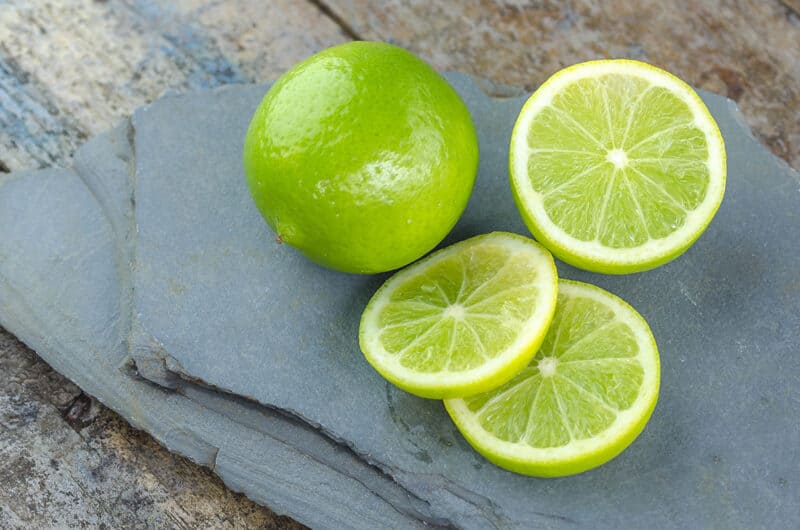
Overwintering Your Lime Tree
If you live in a cooler region, your potted lime tree will need protection in winter.
- Move indoors before the first frost.
- Place near a sunny, south-facing window or under grow lights.
- Reduce watering; let the topsoil dry slightly between waterings.
- Mist occasionally to boost humidity in dry indoor air.
Keep away from radiators, heaters, or drafty windows.
Final Thoughts
Growing limes in pots is a rewarding, space-friendly way to enjoy homegrown citrus, even if you don’t live in a tropical climate. With the right care — proper sunlight, well-draining soil, consistent watering, and regular feeding — your patio, balcony, or sunroom can become a thriving citrus haven.
From zesty cocktails to fresh garnishes and invigorating fragrances, your very own lime tree will deliver both beauty and bounty for years to come.
So, why not pick up a dwarf lime variety, grab a sun-drenched corner, and start your container citrus journey today?

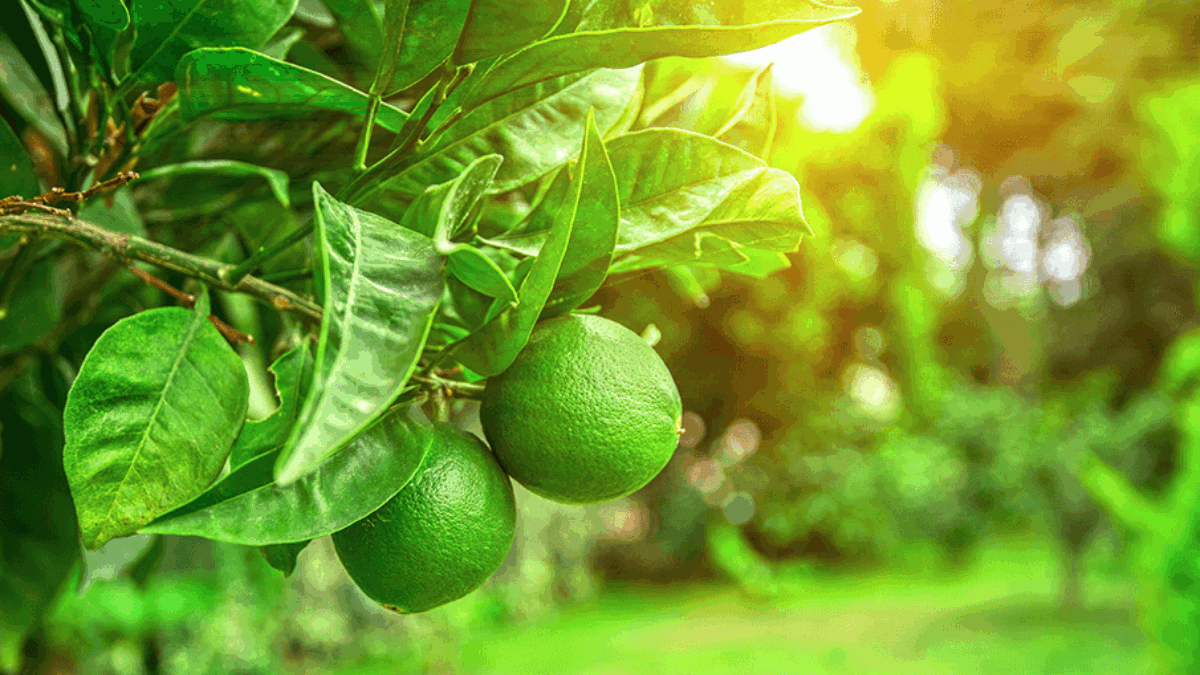




Leave A Comment